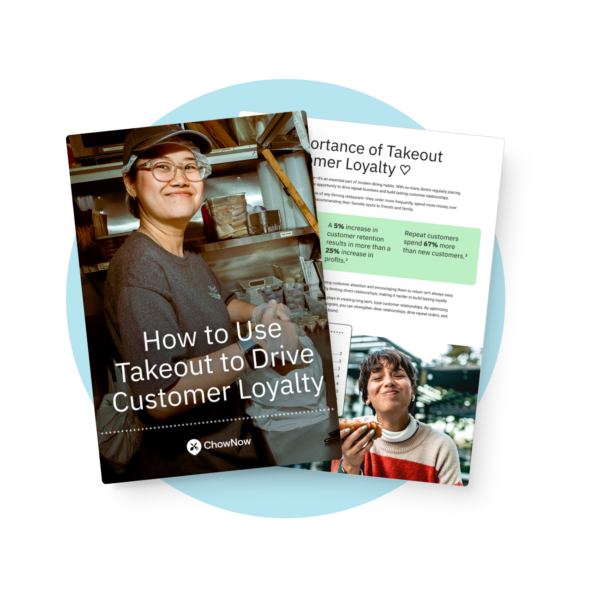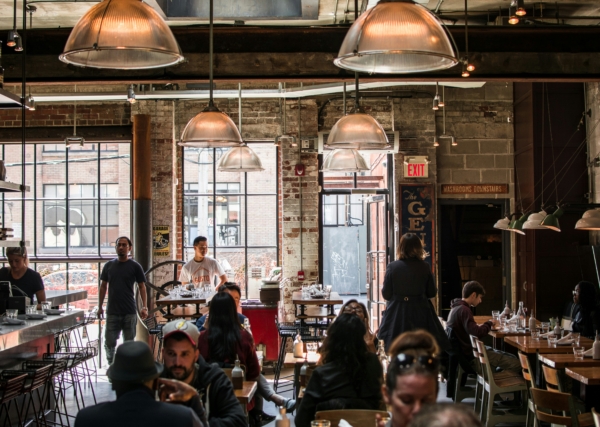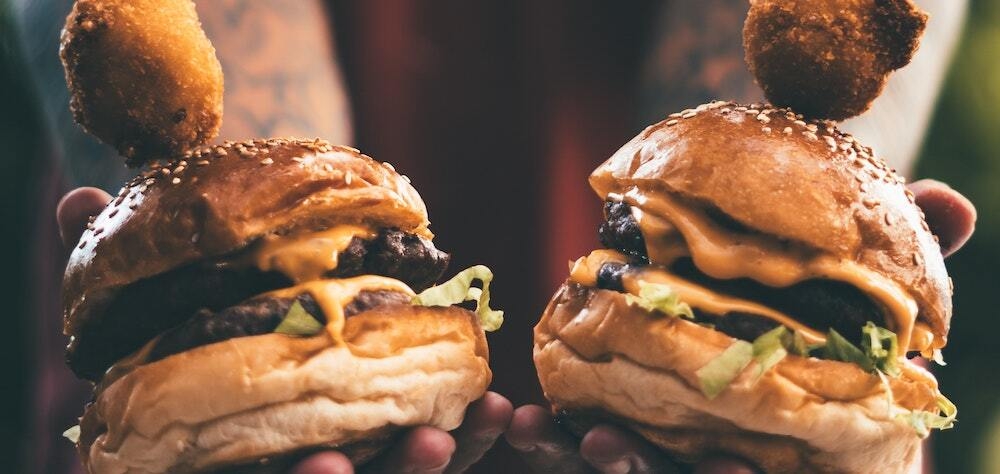How To Improve Your Restaurant’s Yelp Rating

Think of your Yelp rating as your social credit score. Just like banks debate on whether or not to lend you money based on your credit history, customers will decide whether or not to eat at your restaurant based on your overall Yelp rating.
People need assurances that there’s little to no risk when going out to eat, especially now that the price of everything has gone through the roof.
A few too many negative reviews, and they’ll just move on to the next place.
But here’s something else to consider about Yelp: one review can tip the scales.
A glowing five-star write-up can boost your average and bring in more customers, but one harsh comment from an unhappy customer can drag your score down and scare people off.
With Yelp users often making split-second decisions, your restaurant’s success could hinge on a handful of reviews—it’s imperative you get this right.
In this article, you will learn:
- How to fully optimize your Yelp Business Page for visibility and trust
- Ways to earn positive reviews without violating Yelp’s guidelines
- Smart strategies to respond to negative reviews and boost your reputation
You can also take a quick look at how restaurants manage their online presence and visibility in real-world operations in the video below.
Why Yelp Ratings Matter For Your Restaurant
How high you rate on Yelp has a direct impact on your bottom line. A study by Harvard Business School found that a one-star increase in Yelp rating leads to a 5% to 9% increase in revenue.
It also stated that consumers are more likely to trust a restaurant’s rating when it has a high number of Yelp reviews.
In other words, if you want your Yelp rating to actually influence potential diners, you need a high average star rating and a substantial number of reviews.
One glowing review won’t cut it—people look for patterns. More reviews build more trust, which drives more traffic and, ultimately, more revenue.
How To Set Up And Optimize Your Yelp Profile
If you haven’t claimed your Yelp Business Page yet, that’s step one. You can’t control your online reputation if you’re not in the driver’s seat.
Follow this link, find your listing, and claim it. It’s free and gives you the ability to update your business page, respond to reviews, and track what Yelp users are saying about your restaurant.
After you claim your page, fill in every section with relevant information:
- Accurate hours, location, and contact info
- A current version of your menu
- High-quality photos of your food, interior, and signage
- Links to your restaurant website and social media
- Your most accurate categories and services (e.g., takeout, delivery, reservations)
Everything about your Yelp page should influence customers to choose your restaurant. That means no old logos, no grainy food pics, and no missing info.
If it’s outdated, it’s costing you new customers.
Here are a few ways to optimize your Yelp profile:
- Use real, well-lit photos, and never use stock images.
- Upload your logo and make sure your name is consistent across all platforms.
- Choose categories that match what you actually offer. Don’t try to game the system; it backfires because people will leave reviews stating those amenities aren’t there, lowering your rating.
- Encourage guests to check in on Yelp or upload their own photos while they’re dining. These small actions signal to the algorithm that your local business is active and engaging.
Once your Yelp Business page is dialed in, the next step is collecting enough high-quality reviews to build trust without crossing the line on Yelp’s strict policies around review solicitation.
Encouraging Better Reviews Without Violating Yelp’s Guidelines
Yelp makes one thing very clear: don’t ask for reviews.
Unlike other review sites, Yelp’s algorithm is designed to detect and penalize any content that appears to be a review manipulated by a restaurant.
That means no request cards, no follow-up emails asking for stars, and definitely no incentives. Doing so risks having legitimate positive reviews buried or flagged as suspicious.
So, how do you get Yelp reviews without violating their guidelines?
Focus On the Customer Experience First
The best way to get positive reviews is to deliver standout service. That means nailing the basics: hot food, short wait times, friendly staff, and clean spaces.
But it also means personal touches that turn first-timers into loyal customers. When people feel genuinely taken care of, they’ll want to share that.
Create Moments Worth Talking About
Train your staff to recognize occasions when guests are clearly happy and lean into those moments.
When a guest is raving about their meal? That’s your opening to say something like, “We’re on Yelp if you ever feel like sharing.”
You’re not pushing—it’s just a mention.
Gently Guide Without Asking Outright
You can’t ask directly, but you can create gentle nudges that raise awareness. Think of it as putting the idea in their path without saying a word.
Here are a few ways to do it compliantly:
- Add a “Find Us On Yelp” sticker by the register or window decals by the front door
- Place tabletop signs or small displays that mention your Yelp presence
- Include a subtle “Check us out on Yelp” line on receipts or printed menus
- Feature select positive feedback from Yelp users on your social media or website (with attribution)
- Display Yelp badges or widgets in your email footer or contact page
- Enable Yelp check-ins so guests can tag your restaurant in the app
All of these tactics keep Yelp visible without directly asking someone to write a review.
Over time, this low-key approach leads to more reviews, more trust, and better visibility without triggering any alarms in Yelp’s system.
Once you have reviews coming in, you need to keep diners engaged by responding to every review, especially the negative ones.
Responding To Reviews Like A Pro
Hundreds of positive Yelp reviews is a beautiful sight, but customers reading the comments want to see more than just reviews. They want to see how your restaurant responds to feedback, more specifically, negative reviews.
Because of this, you’re not just speaking to the person who left the review but also everyone who reads your comments.
Why Response Matters, Especially for Negative Reviews
Yelp users notice when business owners stay silent. A thoughtful, timely response shows that you take customer feedback seriously, even when it’s not glowing.
It signals professionalism and tells potential customers that if something goes wrong, you’ll make it right.
Tone, Timing, and Templates for Responding Effectively
Respond quickly—within 24 to 48 hours if possible.
Keep your tone calm, respectful, and empathetic. Don’t argue or get defensive.
For negative reviews, acknowledge the issue, apologize if needed, and offer to continue the conversation offline.
Example:
“Hi [Name], thank you for your review. We’re sorry to hear you had a disappointing experience. We’d love the chance to make it right—feel free to reach out to us at [contact info].”
Even your replies to positive reviews matter. A quick thank-you shows appreciation and keeps loyal customers engaged.
It also encourages others to write reviews, knowing their feedback won’t go unnoticed.
Using Feedback to Spot Operational Issues and Improve Service
Reviews aren’t just for damage control—they’re a free source of insight.
Do several reviews mention slow service or confusing menus?
That’s valuable data.
Pay attention to patterns so you can fix root issues and turn future critical reviews into positive reviews.
To learn more about how to handle negative reviews, read our guide, How to Respond to Bad Restaurant Reviews: A Step‑by‑Step Guide for Restaurant Operators.
Common Mistakes That Hurt Your Yelp Rating
Sometimes, it’s not what you’re doing, it’s what you’re not doing that drags down your Yelp rating.
Avoiding these common missteps can make a measurable difference in your online reputation.
Inconsistent Information Across Platforms
If your hours, location, or phone number don’t match across your Yelp page, website, and Google listing, that’s a red flag for both customers and algorithms.
And if you offer direct online ordering, make sure the link works, and the info matches your listing—an outdated menu or broken order button can cost you the sale.
This kind of inconsistency erodes trust and can even lead to lower ratings over time.
Not Responding to Feedback
Whether it’s praise or a complaint, silence makes it look like you don’t care. Taking a minute to respond can turn a bad situation into a second chance or turn a happy guest into a loyal regular.
Letting Negative Reviews Pile Up Unanswered
A steady stream of critical reviews with no follow-up from the owner can seriously tank your Yelp score.
Worse, it can create a snowball effect, where one bad review emboldens others to pile on. Stay on top of new posts and keep the tone constructive, not reactive.
Allowing Bad Photos to Dominate Your Yelp Page
Your Yelp page is a visual platform as much as it is a written one.
Letting unflattering, low-light, or outdated user photos dominate your listing can hurt you more than you think.
Upload your own high-quality images regularly and flag any that are inaccurate or misleading.
Avoiding these mistakes won’t fix your Yelp rating overnight, but it’ll stop you from silently sabotaging your own progress.
Frequently Asked Questions About How to Improve Your Yelp Rating
What’s the best way to ask customers for Yelp reviews?
You don’t. Unlike other review sites, Yelp’s guidelines prohibit asking for reviews, even in a casual way. Instead, focus on delivering great customer experiences, then gently remind guests that you’re on Yelp through signage, email footers, or by enabling check-ins. If they want to leave positive feedback, they will.
Can I remove a fake or unfair Yelp review?
If you believe a review violates Yelp’s content guidelines, like it’s clearly a fake review or includes hate speech or personal attacks, you can report it through your Yelp Business Page.
Yelp won’t remove a review just because it’s negative, but they will take action if it breaks the rules.
How often should I update my Yelp profile?
Any time something changes—hours, menu items, contact info—log into your Yelp Business account and update it.
Keeping your business page accurate helps avoid confusion and prevents negative reviews from guests who feel misled.
Does my Yelp rating affect my SEO or Google presence?
Absolutely. A strong Yelp rating and frequent online reviews can boost your visibility in both Yelp’s search results and Google’s local search results. It helps Google see your business as active and well-reviewed, which can lead to more clicks and more customers.
Is it worth investing in Yelp Ads?
It depends. Yelp Ads can put your restaurant in front of more Yelp users, but results vary by location, competition, and ad budget.
If your Yelp page already has solid reviews, high-quality photos, and accurate info, ads can help amplify your reach. But don’t spend money until your profile is truly dialed in.
A Better Yelp Rating Starts With the Basics
After reading this, you’ve probably realized there’s no magic trick to getting more five-star reviews. It comes down to solid customer service and giving people a reason to come back.
Stick to the basics, stay consistent, and your Yelp rating will follow.






